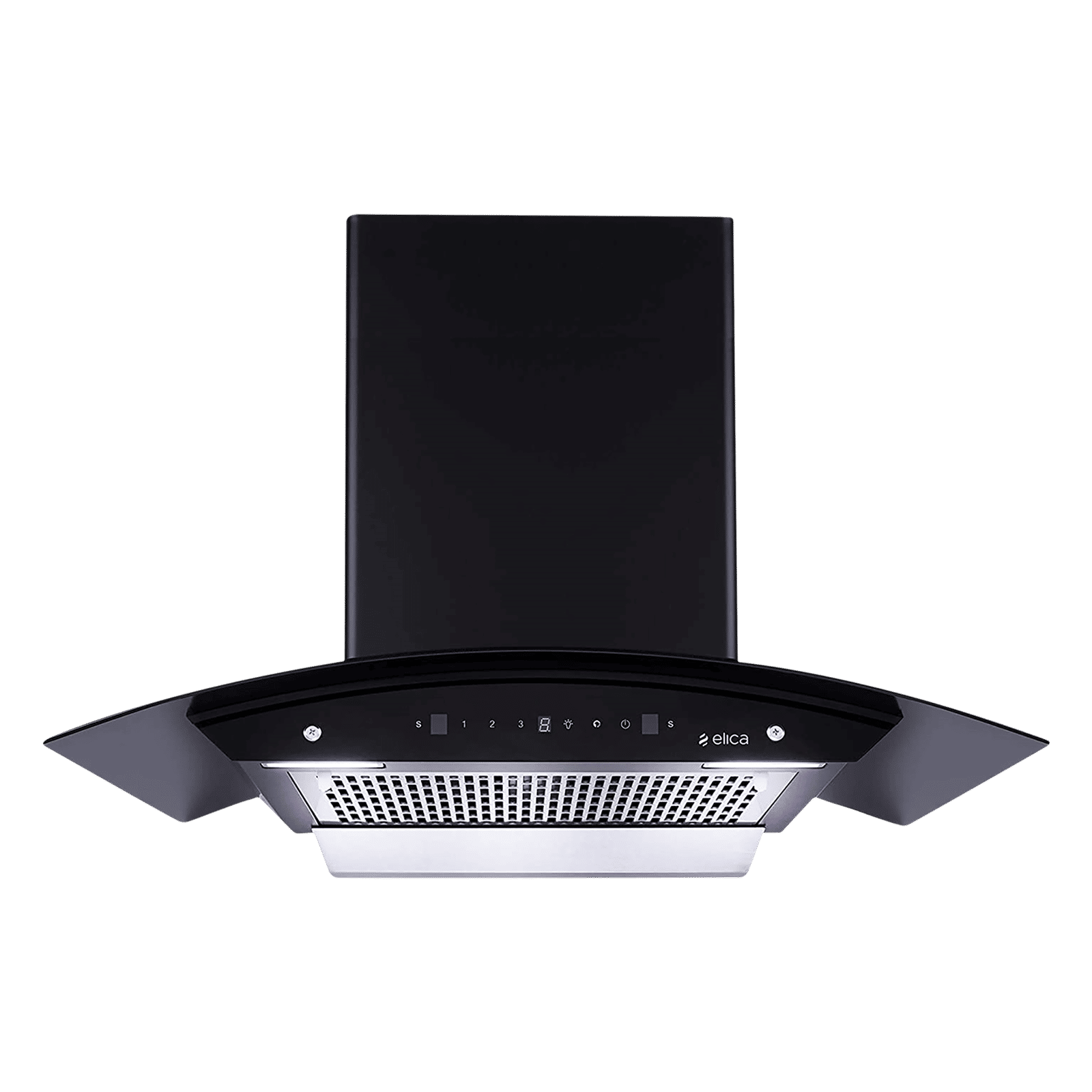Behind the allure of Indian cuisine is a cooking process that often results in smoke hovering over the stove or accumulation of grease on surfaces. While these are not immediately seen, they can be unhealthy, and one of the easiest ways to get rid of them is by installing a kitchen chimney.
A kitchen chimney works by pulling out cooking fumes and replacing them with clean air. One can think of it as filtration of air in the kitchen and most modular kitchens are now designed with a chimney in mind. If you are planning to get a kitchen chimney, here’s what you need to know about them including the different types.
What is a kitchen chimney and what are its benefits?
A kitchen chimney is an essential appliance that works as a ventilation system for your kitchen by extracting airborne pollutants. It works based on the principle of hot air being denser than cold air. It is usually installed above the cooking stove to remove smoke, odours, grease, and heat generated during cooking.
It consists of several components, including a canopy or hood, a fan or a blower, a filter system, and ductwork. The canopy is made of stainless steel or glass and is positioned above the cooking stove to extract pollutants emitted during cooking while the fan is located inside the chimney to create airflow drawing the pollutants upwards and away from the cooking area.
ALSO READ: What is a chimney and which one is best for your kitchen
There are several different types of filters used in a kitchen chimney, including mesh filters, baffle filters, and charcoal filters. The mesh filter consists of layers of mesh to capture grease and oil particles, while the baffle filter separates grease and oil from the airflow. Charcoal or carbon filters are effectively used to absorb any odour and impurities from the air.
The biggest benefit of a kitchen chimney comes in the form of maintaining a clean and hygienic cooking environment. They effectively remove smoke and grease from the kitchen while preventing the buildup of grease and oil on kitchen surfaces or walls.
They also reduce the risk of fire hazards and improve the overall indoor air quality. Since traditional Indian cooking involves a lot of frying and grilling, a chimney can elevate the cooking experience while ensuring the cooking environment is clean, odour-free, and hygienic
Different types of chimneys for Indian kitchens
Kitchen chimneys are available in various designs and styles that suit different kitchen layouts and preferences. There are five main kitchen chimney types and here is how they differ.
Wall-mounted chimney
These chimneys are attached to the wall above the cooking area and are the predominant type.
elica WDFL 906 HC MS NR 90cm 1200m3/hr Ducted Auto Clean Wall Mounted Chimney with Touch Control Panel (Black)
Buy now

Island chimney
An island chimney is suspended from the ceiling above the kitchen island and is preferred for an open kitchen with a stove platform away from the wall.
Built-in chimney
This type of chimney is integrated into the kitchen cabinet or enclosures and is part of modular kitchen designs. They not only blend seamlessly into your kitchen decor but can also be a space-saving solution.
Corner chimney
This is another space-saving solution that is ideal for kitchen layouts where the hob is located against the wall. It is not common in Indian homes though.
Downdraft chimney
Downdraft chimneys are ideal for kitchens with low ceiling height and are installed on the cooktop to suck the fumes downward.
How to choose the right chimney for your home
While there will always be this inevitable debate around whether to use a chimney or an exhaust fan, it is important to know that they both work on the same principle. Their purpose is to remove heat and unpleasant odour from your kitchen, but a chimney uses suction and motors to absorb excessive, unwanted heat and grease and even stops them from building on the kitchen surface.
ALSO READ: Give your kitchen chimney a post-Sadya cleaning this weekend
When it comes to choosing the right chimney for your home, you should first check your kitchen’s area, height, layout, cabinet designs, and ventilation availability. If you have an L-shaped or U-shaped kitchen, then a built-in chimney would be more effective, while an island chimney will work for most homes since they are built right above the cooktop and on the ceiling.
Unleash your inner geek with Croma Unboxed
Subscribe now to stay ahead with the latest articles and updates
You are almost there
Enter your details to subscribe

Happiness unboxed!
Thank you for subscribing to our blog.
Disclaimer: This post as well as the layout and design on this website are protected under Indian intellectual property laws, including the Copyright Act, 1957 and the Trade Marks Act, 1999 and is the property of Infiniti Retail Limited (Croma). Using, copying (in full or in part), adapting or altering this post or any other material from Croma’s website is expressly prohibited without prior written permission from Croma. For permission to use the content on the Croma’s website, please connect on contactunboxed@croma.com
- Related articles
- Popular articles













Karthekayan Iyer
Comments